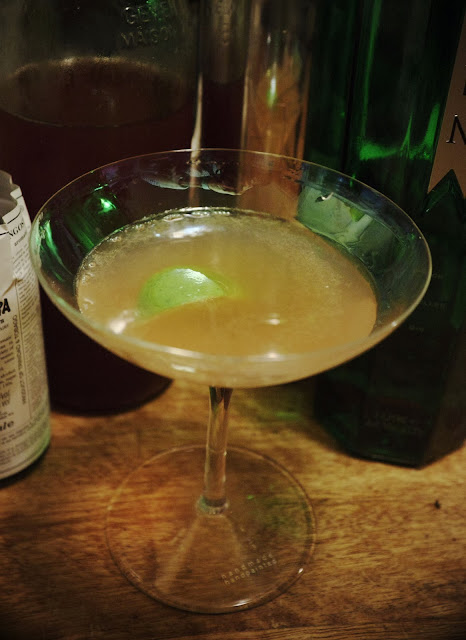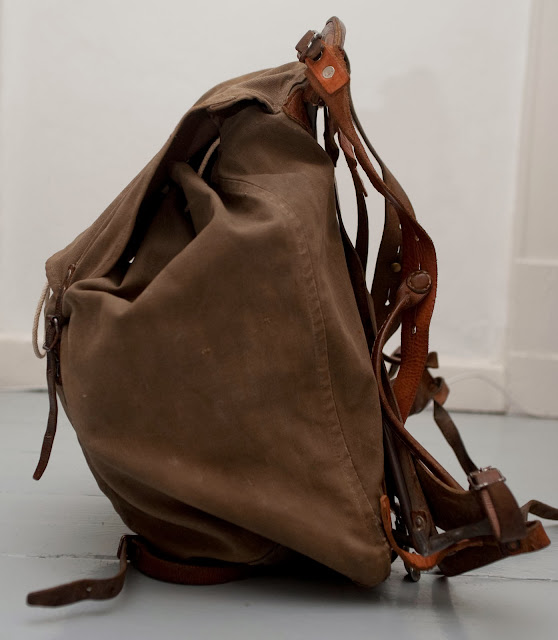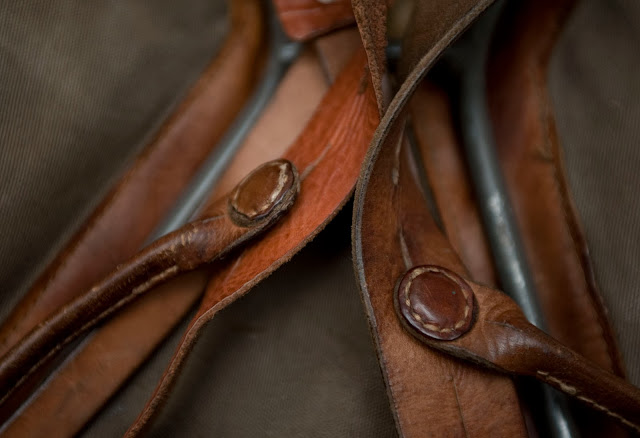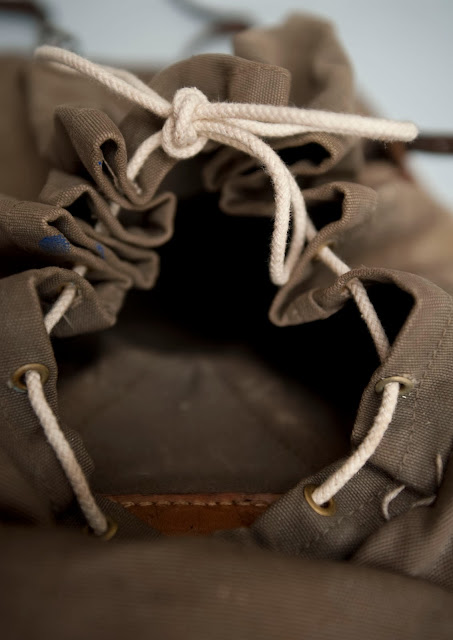A Brilliant Little World Of Its Own - Interview with Will Brown
The Norfolk based brand Old Town Clothing have been long standing favourite of mine - the Navy twill suit I bought from them years ago is still in regular service.
On behalf of Denim Hunters* I recently caught up with Old Town's co-founder, Will Brown, for an interview. (Read an edited version there and see Matt Hind's fantastic Piccadilly Pleasures images used for the article.)
 |
The Marshalsea in Khaki canvas. This slightly fitted 4 button jacket has a district 1890's feel to it.
(I've been wearing a Navy version for 7 years now.) |
 |
| High Rise trousers in the same canvas. They have a pleasingly high waist and wide leg. |
Originally based in London, Will has been making clothes for over 30 years.
Old Town got its start in the mid 1980’s, “I opened a shop in Shoreditch in 1980 when there was little other than the last remnants of the furniture making industry in the area. It wasn’t very successful, but I was supplying a few garments to a boutique called ‘Demob’ in Soho. I was given the run of a spin-off shop, then called ‘Demobilization’ and by rearranging some of the nice fabricated letters on the facia it became ‘Old Town’.”
At first Norfolk might seem like an odd change of location. But it is consistent with Old Town’s desire to plough their own furrow. Indeed, the name “Tin House” was inspired by a local property they restored.
Will was frank about the reasons for moving there, “My partner Miss Willey and I were living on a pretty grim estate in South London, but we found an old caravan on a bizarre plot in north Norfolk. We became attached to the area and found a shop with a flat in a 17th century street in Norwich. So, it seemed a good swap for Kennington. We opened Old Town so long ago the word ‘vintage’ hadn’t been invented (except when referring to wine or cars.)
 |
| The Marshalsea again - in Tin House striped "Pantry Denim." |
All patterns are modern in that they were designed by Will, but have a strict aesthetic firmly rooted in early 20th century utility clothing.
Discussing what informs Tin House designs he said simply, “Historical imagery, costume and design reference. How to get the essence of a style with the least strokes? That’s what interests me most.”
Old Town have developed a loyal following over the last few years. This rigorous aesthetic is part of their appeal. In the ever changing fashion world Old Town offer a simple continuity.
Work wear is becoming increasingly popular, with many brands claiming to produce “heritage" or “authentic” items - something that Old Town stand against, “We never intended Old Town to be either of these. I don’t know at what stage designing and making something stopped being quite sufficient.
 |
| The Short DB Jacket in 12oz Denim |
It does rather feel that things have to have some sort of provenance today, however spurious. It’s quite a bloke-ish thing about spec and authenticity. I think that Old Town is more in the tradition of the early boutiques from the sixties and seventies like ‘Biba’ and ‘Let it Rock’ which were brilliant little worlds of their own.”
Old Town prefer to focus on quality and craftsmanship - all garments are hand made to order in and around the small village of Holt. With an average of 70 garments produced a week, the work is done by both Will himself and local artisans. Quality clothes take time. There is no web shop. You make your selection on a printed order form and post it off to Miss Willey. Turn around time for a garment is 4 to 6 weeks.
 |
| Orfords - a pattern of rugged seafaring jean much favoured on the Suffolk coast between the wars. |
As Will says, “That’s how long it takes. Now just say that we were on a TV show like Challenge Anneka (remember that?) I dare say we could have a pair of trousers cut, sewn, buttonholed, buttoned, laundered, pressed and packed within a few hours. In practice trousers are cut as a group, the sewing ladies take their work on a weekly basis, the laundry similarly and so on. You can see how the days add up.
Also, I suppose customers do warm to the notion of the service and the necessary wait.”
All of Old Town’s material is UK sourced too. With so many labels looking for cheaper options abroad it is fantastic to see a brand do this.
However, asked what Old Town look for when choosing fabric Will was quite direct, “Availability. We have been very fortunate with woollen cloths as they are woven in Britain and the minimum quantities are small (200 metres or so).
Cottons are tricky, even good old navy or khaki 3111 cotton drills aren’t that easy; we have to have the khaki dyed.
I would love to find interesting and obscure denims such as the old fashioned ‘salt and pepper’ effect that one used to see on warehouse coats. We would be laughed off trade stands at fabric fairs with the rather modest quantities that we could commit to. If anyone knows of interesting denims sold in less than a shipping containers worth I would love to know.”
 |
| A small range of ladies clothing also includes these, the no.5's - here in 12oz denim |
Will may have very set ideas on what Old Town are, but not at the expense of the brand developing, “I hope it will continue to evolve, my instinct is towards a more modernist feel but I don’t know if customers would like it or not so I try to slip a bit in here and there.
What I’d really like to do is get off the buttonhole machine and have time to experiment, design clothes… in fact, just the nice bits but who wouldn’t?”
Given that “a more modernist feel” probably equates to post 1930 die hard fans need not worry. Refreshingly un-fussed by the vagaries of fashion, Old Town simply focus on doing what they love. There is no empty marketing rhetoric here. Such integrity is sadly a rare thing these days.
Old Town is indeed a brilliant little world of its own, and whilst it’s clear that any brand has to evolve to survive, one hopes that Old Town keep doing what they do best - minimal yet beautiful clothes made by people with a profound love of what they do. If only more people thought this way. I urge you to check out www.old-town.co.uk.
*Unsurprisingly DHs preoccupation is with all things selvedge denim related. It is worth stressing that selvedge does not necessarily equal quality. By the same token not all non selvedge denim is bad.
























